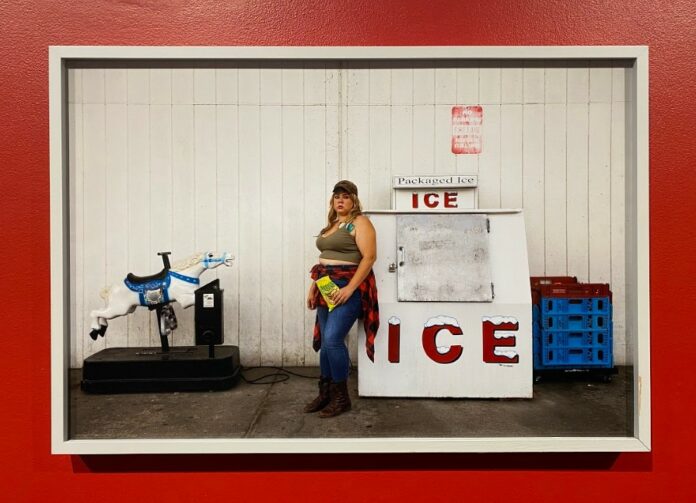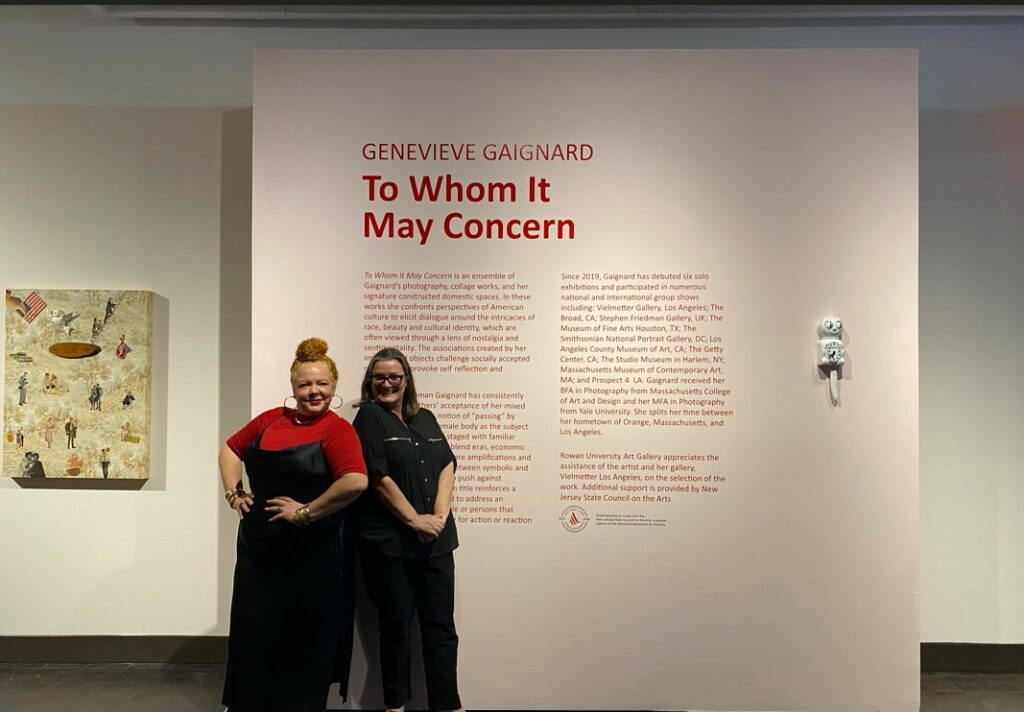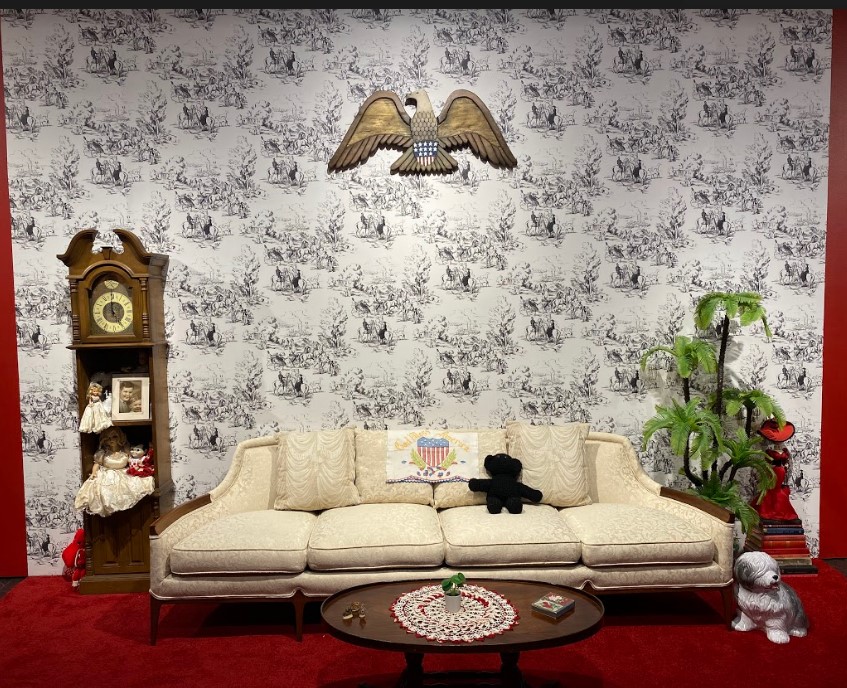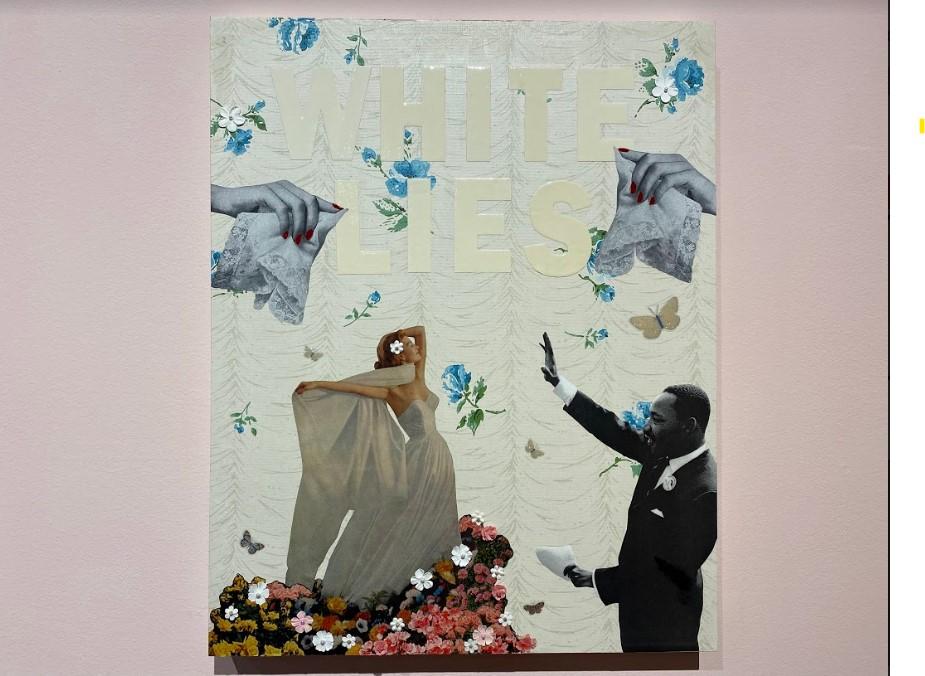
Rowan’s Art Gallery held an opening reception for its newest installation, “To Whom It May Concern,” which featured pieces from interdisciplinary artist Genevieve Gaignard on Sept. 15. The show included a curated collection of Gaignard’s work ranging from photography to collage to installation.
Eleven pieces were displayed, including three chromogenic prints, six mixed media pieces, a corner cabinet, and an archival inkjet print. The gallery contained work from Gaignard’s first shows in Los Angeles and spaned all the way up to her most recent opening in order to show a full representation of her art.
“[The art gallery’s curator, Mary Salvante and I] both agreed that having a representation of the different ways I work would make the most sense,” said Gaignard. “…to see the range, the growth and where I still need to go in on more; delve in a bit deeper.”

Gaignard uses her identity as a white-passing, biracial woman to visualize the subjects of race and identity in American society and history in her art. She describes her work with the words “nostalgia,” “Americana,” “stereotypes,” and “grandma’s house.”
“It kind of just started out… when I was in grad school seeing other students of color making work about their Black experience and thinking, ‘Wow, I have something maybe that hasn’t necessarily been addressed,’” Gaignard said.
As a self-described “chameleon,” Gaignard transforms herself through the use of props, wigs, and costumes, making herself almost unrecognizable to viewers. She places herself as the subject of her portraits to create performative pieces surrounding the topic of femininity and the concept of “passing.”
Her photograph, “Vanilla Ice,” features Gaignard leaning on an ice box, dressed in casual clothing with a pack of cigarettes tucked into the spaghetti straps of her tank top and a bag of Funyuns in her hand; this is just one of the four female characters Gaignard presents in this installation.
When talking about her installation “Black, White, and Red All Over,” she stated that the inspiration for this piece was the vintage black-and-white wallpaper that now adorns the walls of her living room display.
At first glance, the design looks nothing out of the ordinary; it simply shows a scene of Americans going about their day. However, a closer look reveals a pattern featuring enslaved people in the antebellum South.
When discovering the wallpaper, Gaignard thought it must have been from a long time ago, but was shocked to learn the paper was produced in the 1970s.
“[It] meant people still wanted to live with this type of imagery and celebrate slavery. It was looking like a beautiful scene, something to be a part of,” Gaignard said.

Gaignard’s collage piece titled “White Lies” contained images she collected from newspapers and magazines. The collage includes a white woman in a white dress standing near yet seemingly ignoring Martin Luther King, Jr.
When asked about why she chose Martin Luther King Jr., she explained that people would know who he is.
“He is a very prominent figure,” Gaignard said. “This woman is blind to it. She pays no attention to this figure”
“This kind of way of putting a blind eye to things happening around them. There is this kind of preservation that is happening. We are keeping this polished. We are keeping these white lies to keep everything great for whiteness,” said Gaignard.

When choosing artists to invite to the gallery, Salvante looks for someone who will be able to engage with the students and whose work will relate to what students are actually learning in the classroom.
“There’s a lot in this show that has to do with anthropology, African American studies; about history, social justice,” Gaignard said.
However, Salvante explained that the theme of this season has more to do with the medium, rather than the topic.
“We’re looking at doing exhibitions that are lens-based,” said Salvante. “[such as] photography and video.”
The first discipline Salvante saw of Gaignard’s was her photography. Gaignard has a connection with Rowan professor, Jenny Drumgoole, as they both attended Yale University to earn their master’s of fine arts.
“I had given a talk with Jenny’s [photography] class during the pandemic and Jenny seemed inspired by the work I was making and shared that with [Salvante,]” explained Gaignard.
Gaignard knows that her art can make an impact on people.
“It doesn’t have to impact everybody, it just has to hit a few people,” Gaignard said.
Along with making an impact with her art, she wants to be a part of history.
“I am also interested in being a part of history too. When I am not here anymore, hopefully, this stuff will be around to further help people to push beyond the boundaries of white supremacy and the way of society that we live in,” Gaignard said.
Genevieve Gaignard’s solo exhibition, “To Whom It May Concern” will be on display at 301 High Street until Oct. 29 and is free to view.
For questions/comments about this story email the.whit.arts@gmail.com or tweet @TheWhitOnline.





